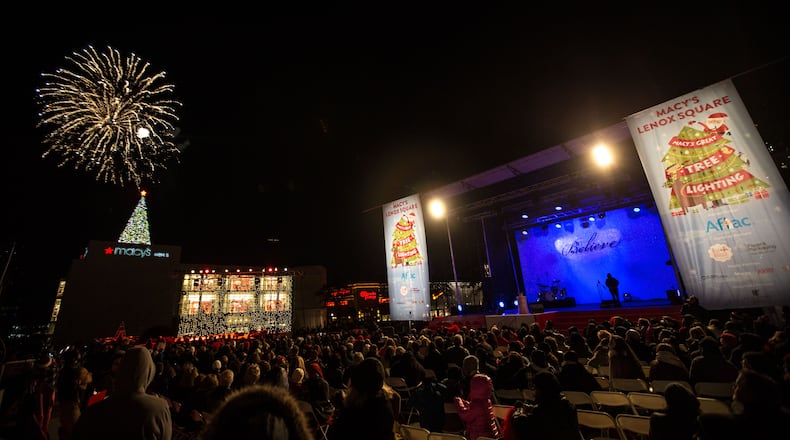The traditions that color our modern perspective of Christmas (in shades of red and green) have roots that stretch to the days of pioneers, civil wars and stock market catastrophes. Think you know Christmas inside and out in Atlanta? Here are five things you probably didn't know:
The Christmas tree is a German pioneer thing
Early German settlers in Georgia and along the East Coast brought with them the midwinter tradition of fetching a young fir from the outdoors, decorating it with lights and gathering the family for a feast. Before electricity, it was one way to get through the darkness that fell so heavily in the days near the winter solstice. Christmas itself was even banned for a period in the early days in the Northeast.
You can taste the flavor of Atlanta's holiday history for yourself by touring three iconic homes on a candlelit stroll through Christmas past at the Atlanta History Center's Candlelight Nights, which runs from 5:30 to 9:30 PM on Dec. 9 and Dec. 16.
The Christmas tree at Lenox was once nationally relevant
In 1948, as night fell on Thanksgiving, Rich's unveiled a massive tree atop its flagship downtown location. The tree was visible for miles, and its lighting, viewing and surrounding family activities were among the most definitive holiday events in Atlanta for 43 years. The tree even graced the cover of Time Magazine in 1961.
When the flagship store was shuttered in 1991, the tree was moved to Underground Atlanta and later to Lenox Square mall. In 2005, Rich's Great Tree was given a final farewell, and it was reintroduced to the world as The Great Tree at Macy's. In 2012, the crane removing the tree collapsed, sending its trunk through the store's roof. In every year since that incident, Macy's has instead placed a scaled-back artificial tree in the corner of the parking lot. In 2015 and 2016, just to really shake things up the tree lighting was moved to the Sunday before Thanksgiving.
The Pink Pig was once a highlight of childhood
The children of 1953 (and the years thereafter) were probably exposed to a degree of risk. The ride once took the city's children high above the original Rich's store. Today, Priscilla the Pink Pig is back in action – albeit in a much safer, more grounded form – as Macy's once again will offer children of all ages a ride that is distinctly Atlanta. The ride costs $3, with discounts available. A portion of the proceeds will benefit Children's Healthcare of Atlanta.
Atlanta is why Santa looks like that
Although Santa Claus is 200 years old, the current look and feel can be traced to 1931, when Coca-Cola commissioned artist Haddon Sundblom to create a Santa Claus image for a print advertisement. Sundblom, in turn, referenced the famed "A Visit from St. Nicholas" of 'twas-the-night fame. From his interpretation, Sundblom envisioned a "warm, friendly, pleasantly plump and human Santa." Eighty-five years later, and the velvet jumpsuit with white fur trim and a beard to match now define the jolly old elf. The endurance of this image in the collective mindset is ironic, though, considering the original oil painting that defines Santa Claus is long gone. It was painted over by Sundblom himself to save on canvas cost.
And why polar bears are happy
It goes without saying that Coca-Cola has had an indelible mark on both Atlanta and advertising worldwide. But few images more closely connect our city, the holiday season and the mystic beauty of the North Pole during the holiday season than the kindhearted polar bears that apparently live just outside Santa's workshop.
The bears were, like Santa himself, conjured to remind people that they could drink Coca-Cola in winter, too. The bears made their debut in print long ago, but TV and movie theater spots began running in 1993, and are today the stuff of Madison Avenue (and Peachtree Street) legend.
What you didn't know? Creator Ken Stewart's playful puppy inspired the joyful white bears. More than 20 years later, they remain the fluffy, mischievous star of winter advertising worldwide while also serving as the "poster species" for climate change. The history of Coca-Cola's advertising is always on display at the World of Coca-Cola.
About the Author
Keep Reading
The Latest
Featured


